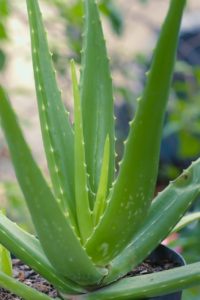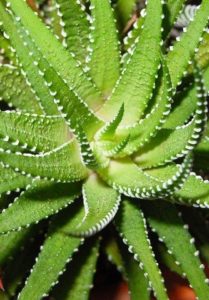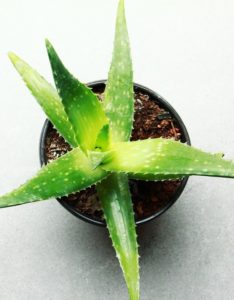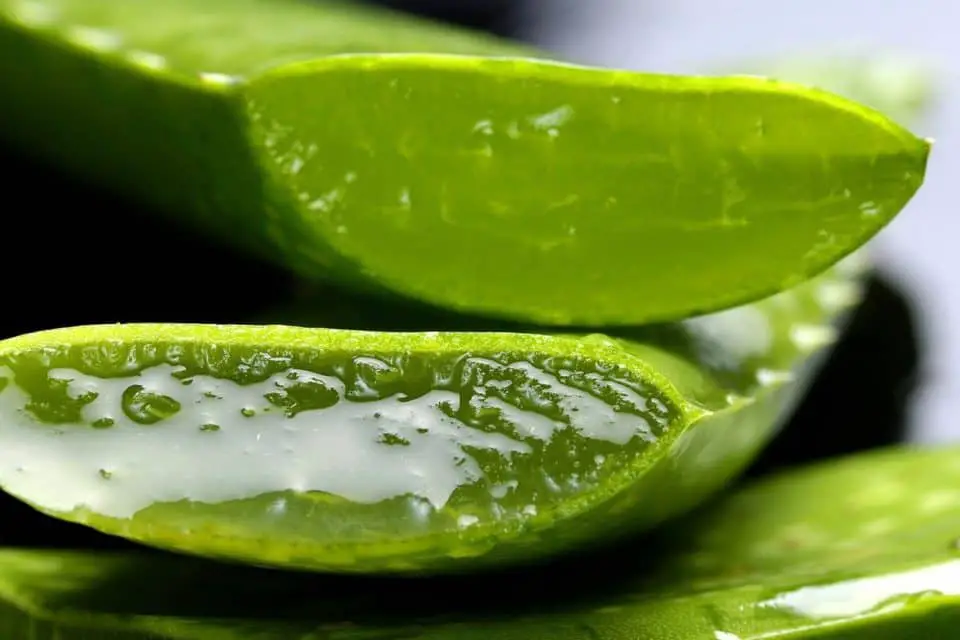Some links in the post are affiliate links and I get a commission from purchases made through some links found in the post.
The genus Aloe is a succulent plant species. You have most likely come across the Aloe Vera if you have every wandered around the garden centre.
Aloe Vera are possibly the most common household plant in this species, although if you are interested in Aloes you will find many different types of them.
Aloes are great plants for both indoors and outside. Most aloes have thick fleshy leaves which grow from a very short base or central system.
Many aloe plants will have leaves which are serrated although they are not normally sharp as you would find thorns to be.
The main reason an aloe plant has no roots is due to overwatering. Other reasons could be due to soil issues, pests and diseases, hypothermia, moving issues and damage. To save you aloe plant, you can propagate it using cuttings or offshoots.
Before you Buy Your Aloe Plant
There are some things to consider before heading off to the garden centre so let’s look at them.
Sunlight or Shade?
Aloes do not enjoy sustained direct sunlight. This may cause the leaves to turn yellow because the soil has dried out.
Bright, indirect sunlight or even artificial sunlight will give you a healthy plant instead of one that is starved of water.
If your plant is struggling due to light, trying using this to help regulate the lighting.
Terracotta or Plastic Pot?

Terracotta pots, and any porous materials are better for aloe plants because they will allow the soil to dry out completely between watering sessions.
Plastic and glazed pots tend to retain moisture. Aloes prefer not to have their roots wet for extended periods.
Aloes need good drainage so make sure that the pot you chose has at least one decent hole at the base.
While aloes are hardy plants they do not do well in pots with bad drainage. Bad drainage can cause them to wilt and die due to root rot.
Potting Mix
You should select a mix which is suitable for cacti and succulents as this will drain well. Gardening soil will not work.
Ideally you are looking for a mix of bark, perlite, and lava rock as this will give you the best drainage for the aloe.
If you’re enjoying this article, check out our article on aloe vera plant leaves bending (6 causes, solutions & more)
Why Does my Aloe Plant Have no Roots?
One of the first indications that your aloe plant does not have any roots is when you find it wobbles. This is a sign of an unhealthy aloe plant.
1) Inconsistent/Watering Issues
The most common reason for your aloe having no roots is due to inconsistent and/or overwatering.
While there are other reasons why your plant has no roots, such as physical damage, root pests and hypothermia, it is most likely to be suffering from water issues.
If you plan on propagating your aloe this is a good time to do it because it may not recover and die.
If you need help watering your plant, try using this automatic drip irrigation kit.
2) Soil Issues
Root rot is another reason why your aloe plant has no roots. Root rot occurs when the plant is waterlogged. The roots simply suffocate because of lack of oxygen.
If you think of the natural environment of the aloe plant you will see that it thrives in warm, semi-arid and arid areas where the soil is light and aerated.
Clay type soil will not give a good environment for your plant. Once your aloe has been affected by root rot it will destroy the whole root system.
If you dig up your aloe you will find a mushy ball of gooey soil – and no roots.
3) Diseases
Mildew, mold, and fungal issues go hand-in-hand with root rot. These all thrive in damp soil.
You will first notice that the leaves of your aloe change color and develop brown spots. They will start to droop and wilt.
If you plan on trying to treat root rot then you need to act as soon as you can. Trim off all infected roots and wash the soil off the remaining roots. You should repot it with fresh potting mix.
There are several commercial fungicides at your garden centre which will work. If you prefer to use a homemade remedy, then try a mixture of cinnamon, chamomile, and charcoal.
4) Overwatering
Aloes are used to surviving without water for long periods and if you water them along with the rest of your houseplants you will most likely be giving them too much water.
Once a week is normally enough for aloes although you can check the soil at the base by sticking your finger into it. The top 1-2 inches should be dry before you water the plant again.
5) Hypothermia
Again, thinking about the natural habitat of your aloe you will see that it does well in warm weather.
It does not enjoy being placed in a cold draught. Once the plant’s temperature drops it will result in hypothermia.
Additionally, your aloe does not enjoy extremely humid conditions, it prefers dry places.
A combination of cold draughts and wet soil will mean you have an unhappy plant which may develop root rot.
6) Moving Issues
Your aloe prefers to be placed in the correct spot and then left there. Transplanting, moving, and repotting will disturb our plant and can send it into shock.
This is especially important when bringing your new aloe home from the garden centre. Decide about where it is going to be placed and move it as little as possible afterwards.
Newly propagated aloes will also appear to go into shock until their roots have formed.
7) Damage
Even though it may seem that your aloe is a hardy plant because it tolerates harsher conditions, the root system is quite fragile.
If you pull up an aloe with a sudden jerky movement you will find that the leaves simply break away from the root and you are left with an aloe without roots.
8) Root pests
Aloes do suffer from bugs around their roots. If you have exhausted all the other reasons for no roots, you may want to investigate below the soil.
Look for insects such as maggots, weevils, and root mealybugs which will eat healthy roots.
9) Check the Soil
Your aloe will do well in sandy or loamy soil mixes. They also prefer a soil with a pH of 7.0 – 8.5 which is a more alkaline soil mix. Soil which is too acidic will affect new root growth.
Will my Aloe Grow Without Roots?
 Your aloe will not grow without roots, every plant needs roots to absorb nutrients.
Your aloe will not grow without roots, every plant needs roots to absorb nutrients.
They also need roots to hold them upright so that they do not get blown over in the wind.
However, it is possible to grow new roots if you have managed to remove any root rot.
It is also a good idea to take a cutting or offshoots and start a new plant which does not have any root rot problems.
How do you Regrow Aloe Vera Roots?
If your aloe vera plant has been accidentally damaged and some of the roots have been separated, you may wonder if it will be possible to regrow roots.
Fortunately, aloe vera roots grow very easily. If there are even a small number of roots still attached to the plant you may be able to save it.
Give your plant the best treatment you can – be gentle with it, settle it down into a new pot with good potting mix and let it rest.
Water as needed and within a few weeks you will notice a difference in the plant. This will mean that new roots have grown, and your plant is happy.
Propagation is a simple way to form new roots. You can easily do this if your friend has a different aloe to yours.
Take a cutting (use a clean pair of secateurs) from either the leaf or the stem part. Both will grow.
Cuttings
- Pick a leaf that is more than 3” long
- Cut the leaf at an angle, not straight across
- Leave the leaf to lie for several days until a film has formed and the cut is sealed
- Make sure your new pot has drainage holes and good potting mix
- Plant your new cutting, water, and let it rest
A note here: keep the soil moist for the first four weeks while the cutting establishes itself. It may even shrivel and appear to die but don’t panic as it is simply growing its roots.
Offshoots
The little new plants around your aloe are called pups. It is very easy to grow a new plant this way.
- Select your pup – choose a healthy one that is bigger than others if possible
- Choose a pup with at least four leaves
- Gently pry the pup and its roots away from the main plant. If you cannot o this, use a sharp knife and cut through the roots
- Select your pot – with good drainage and good mix
- Plant your pup deep enough so that the root ball is covered.
- Water your new aloe and let it rest while it establishes itself
A note: if you prefer you can use a rooting mixture, a good idea for a hormone free one can be made of honey, cinnamon, or a mixture of both.
How do you Save an Aloe Plant Without Roots?
The easiest way and possibly the best way with more success is to dip the base into a rooting hormone, either commercial or home-made.
Place the aloe in the pot and cover the stump. Water the plant and leave it to rest.
You should check the soil daily and keep it moist while the roots form.
Will it Root in Water?
While it is possible to grow aloe roots by popping it into a jar of water, it is not the best way because it will eventually succumb to root rot, even before it grows to be healthy.
Why Won’t your Aloe Plant Root?
The two reasons why your cutting won’t grow roots are either too much water and/or not enough light.
Before you pop your cutting into soil make sure that the base is dry so there is no chance of root rot.
Once you have taken care of these two issues you will find that growing roots on aloes is easy and a reliable way to form another plant.
Can you Save an Aloe with Root Rot?
Yes, you can save an aloe with root rot, if you act fast enough:
- Remove from the pot as soon as you can
- Cut away all rotting roots and see what you have left
- Make sure you use new soil and a new pot
- Ensure that the pot has good drainage and the potting mix suitable for succulents
- Dip the base into a growth hormone and place in the pot
- Cover the root ball
- Water once and then leave the plant to rest
- Check water frequently
A note here: don’t be tempted to give your aloe fertiliser, they are not huge fans of this, and it may even do harm by causing them to go into shock.
Final Thoughts
 Make sure that it your aloe leaves are cut, any pets and children do not touch the gel.
Make sure that it your aloe leaves are cut, any pets and children do not touch the gel.
While it is not toxic, it can if swallowed cause indigestion, nausea, and vomiting.
There is no reason why you should not have as many healthy aloes in your house or garden as you like.
Aloes are easy to propagate and easy to root if done correctly, they make great gifts and will enhance your garden, house, or patio the whole year, without dropping leaves anywhere.
Before you go, here are some more related articles I encourage you to read below to help solve more of your gardening issues:
Why is my succulent turning purple.
What Happens to an Overwatered Aloe Vera Plant
Why is my Aloe Vera Plant Turning Different Colors

